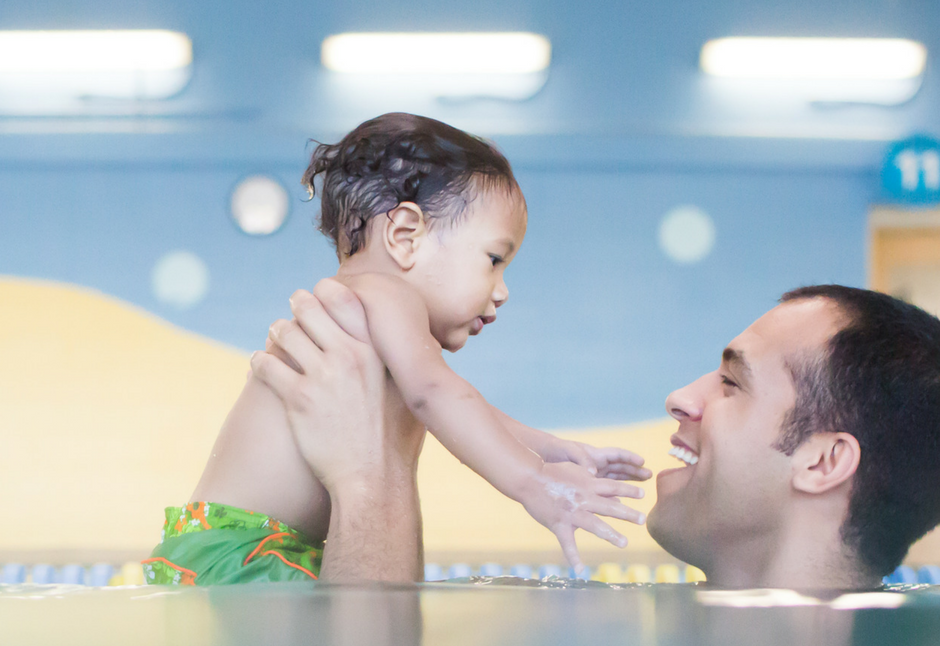
By: Jon Foss, CEO and Lead Instructor, Foss Swim School
It’s a scene you’ve probably seen at any swimming class with young children in it—a child unhappy with their lot in life and crying loudly. It’s no fault of the child or parent. Crying is a natural reaction in certain cases. It also is a challenge that can be overcome when you know why the child is crying, and what outcome you want to achieve.
I’ve been teaching swimming for decades to children of all ages and I’m an avid follower of child psychology and research into how children learn. I’ve used that knowledge to inform the Foss Swim School curriculum, as well as the training our instructors receive on how to work through a crying spell.
In general, I think there are five basic reasons children cry at swimming lessons, and we teach our Foss Swim School instructors on kind, effective ways to address each:
1. A literal fear of water itself.
This is a natural reaction and actually can be a good thing. If the child does not know how to swim they should have apprehension toward water. I’ve always felt that looking into deeper water gives you a feeling of vertigo and may be very unsettling.
WHAT IT LOOKS LIKE: This child is typically looking at the water and then looking away.
2. Seeking attention from a parent.
Crying is a surefire way for a child to get parents to do what the child wants. By 10 months, some children have learned to cry deliberately to spur action—in this case, trying to get a parent to “pick me up” or “get me out of here.” It’s not bad behavior—human children evolved crying for attention as a survival tool, but in this case it is misdirected.
WHAT IT LOOKS LIKE: Typically you will see a child reaching to Mom, focused on their parent.
3. Trying to alter the behavior of the instructor.
Kids often have their own plans, and when they don’t get their way, crying (either from frustration, or as a tactic to get attention) can be part of the scene.
WHAT IT LOOKS LIKE: This can manifest itself as anger, dismissiveness or on occasion crying. The image of a child with arms crossed and looking away comes to me.
4. “Stranger danger”-type fear of the instructor.
Crying in this case also is a natural, self-protective instinct in children—but again, one that can take away from learning.
WHAT IT LOOKS LIKE: Crying while looking at the instructor or other unfamiliar people, then looking for mom or dad.
5. Sensory overload.
Pools are full of strange sights, sounds and sensations. The echoes, water in the eyes, temperature variations, reflecting lights, a falling sensation when trying to do a backfloat—all of these can be a trigger. The younger child is, the more apt they are to experience sensory overload. Some kids never have this problem, others may sometimes when it is coupled with hunger or overtiredness, and some kids are very sensitive to stimuli.
WHAT IT LOOKS LIKE: Might appear to be crying for no reason, or after something startling happens.
Addressing crying with kindness
The most important element in dealing with a crying child is accepting this is OK and choosing to respond rather than react. Parents should know it happens all the time, and there is absolutely no shame in having your child cry. It’s natural, and almost always healthy.
Our approach to teaching swimming begins with getting kids to a place where they can laugh. As my wife Susan has so aptly stated, “Laughter indicates the environment for learning is ready.” When a child is crying, we just need to use different tools. These might include:
- Letting a child watch for a while to see how much other kids enjoy the water
- Offering reassurance and giving a child a small thing they can do, and reward them with joy
- Bringing in help to allow the instructor more one on one time with the child
- Addressing specific sources of anxiety where possible (such as trying a class at a quieter time)
When crying happens, parents and instructors should work together in an attempt to diagnose what it is that is causing the crying, then work together to plan a solution. Both parents and teachers have a role, and we want your input and ideas. This is also why Foss Swim School deliberately hires mature, personable and adept people as our instructors, and trains them both in the art of teaching swimming AND engaging with children in healthy ways—critical skills for teaching how to swim well.
